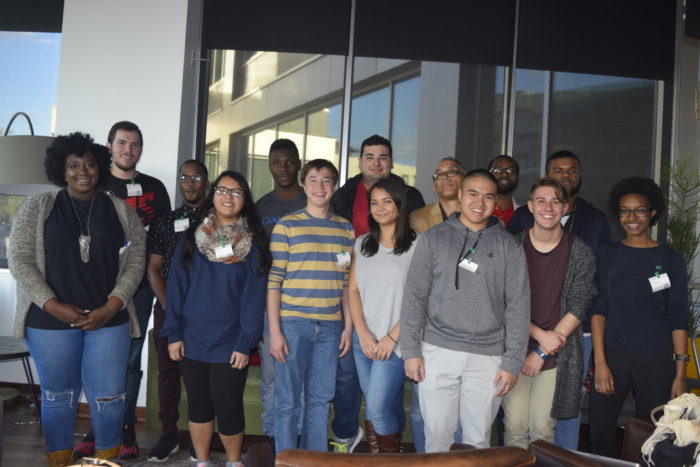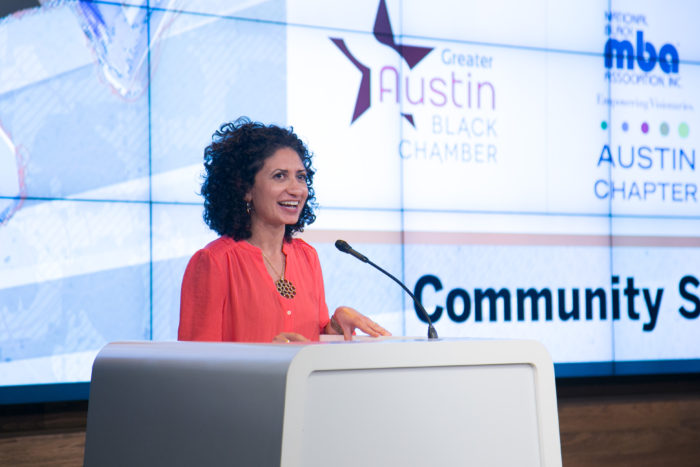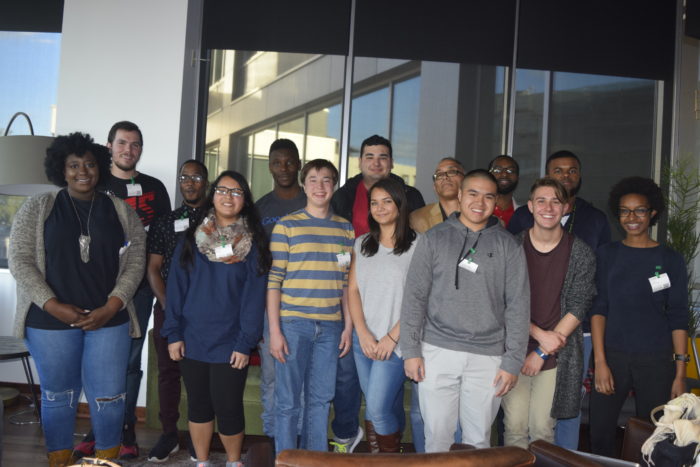
With tech giants like Dell, Apple, Samsung, Google, Oracle and Facebook setting up shop in the Austin area, it may be difficult to believe more than 50,000 residents don’t have access to the Internet, according to a 2015 Digital Inclusion in Austin study.
To bridge this digital divide, Google Fiber has enlisted the help of some tech savvy UT Austin and Huston-Tillotson University students. Together they are working to solve the challenges of technology training and access through the Google Community Leaders program.
“Google Fiber has clear, positive social impact goals for any city we work in,” says Parisa Fatehi-Weeks, head of Community Impact Investments and Programs for Google Fiber in Austin. “We want to be a part of the local community and make it a better place for all.”
She explained the company has three priorities for Austin: bridging the digital divide, increasing STEM education, and expanding entrepreneurship in underrepresented communities.
“Our Community Leaders Program is mainly focused on that first goal,” Fatehi-Weeks says. “We want to help students get hands-on experience so they can be the future leaders for digital inclusion.”
Students applied last summer to get into the competitive program that allows them to work with local nonprofits while being mentored by Google employees. Javier de la Garza, a UT Austin computer science senior, is leading a group that’s working with Austin Free-Net, a nonprofit that aims to increase digital inclusion.

He and co-leader Liz Oppenheim are focused on two projects with their team: an awareness campaign and creating an online dashboard that illustrates statistics and other information regarding the community outreach work of Austin Free-Net.
Another team led by Casey Brennan, a human relations sophomore, is working with the Housing Authority of the City of Austin to help distribute free computers to residents. As part of the effort, Google Fiber is connecting public housing residents to internet service at no cost.
After teaching residents how to set up their computers, Brennan and his team help them get started by practicing a few basic tasks, such as getting online and creating passwords. The team created a script for these sessions so that all necessary material is covered when the computers are handed off to the residents. They also developed an insert promoting digital inclusion for the HACA newsletter and are now working on a communications plan for the housing authority.
The third team is working with the Girl Scouts to create trainings via webcam about how to safely use social media, and how to do basic coding.
Not only has the program helped local residents and nonprofits, but the students benefit from interactions with their Google mentors and clients while learning project-management and interpersonal skills often not acquired until after graduation.
“Liz and I have learned about group management, how to keep morale high and how to work through mistakes and push the team to work harder,” says De la Garza, who will be working at Microsoft after graduation. “It has helped me realize a more realistic approach to real-life problems.”
Brennan also gained some insight into the working world by teaming up with a diverse group of people he otherwise would never have met.
“One of my favorite parts about this work is exposure to people from different disciplines and backgrounds,” Brennan adds.
From Google’s perspective, the program aligns with their mission to ensure that all people have access to the Internet and have the resources they need to use it to their full advantage.
“We have students who are ambitious go-getters. They are all working to make their specific projects successful,” says Lynette Barksdale, Google Fiber staffing lead. “Googlers who are mentors are able to step away from their everyday jobs and partner with the college students—that keeps them engaged as well.”



